Tetrabutylammonium fluoride
Synonym(s):‘Fluoride’ on silica gel;TBAF;TBAF on silica gel;TBAF solution
- CAS NO.:429-41-4
- Empirical Formula: C16H36FN
- Molecular Weight: 261.46
- MDL number: MFCD00149980
- EINECS: 207-057-2
- SAFETY DATA SHEET (SDS)
- Update Date: 2025-01-27 09:38:02

What is Tetrabutylammonium fluoride?
Description
TBAF is typically obtained as a trihydrate (TBAF-3H2O), 1M solution in THF, or 75 wt% solution in H2O. TBAF will always contain some water due to the fact that the fluorine ion is such a great hydrogen bond acceptor.
Chemical properties
Clear light greenish to amber or brown solution
The Uses of Tetrabutylammonium fluoride
Tetrabutylammonium fluoride is a reagent in organic syntheses in addition, condensation, base-catalyzed cyclization reactions, fluorination and desulfonylation reactions and as a deprotecting agent. Typically dried prior to use.
The Uses of Tetrabutylammonium fluoride

To a stirred solution of the SM (250 mg, 0.43 mmol) in THF (4 mL) was added TBAF (4 mL, 1M in THF). The reaction mixture was stirred at 80 C for 12 h. After cooling to RT, the mixture was diluted with EtOAc (20 mL), washed with H2O, and concentrated in vacuo. The crude material was purified by Prep HPLC (formic acid) to provide the product as a white solid. [24 mg, 12%]
The Uses of Tetrabutylammonium fluoride
Catalyst for etherification of alcohols and phenols with alkyl halides Catalyst for benzylation reactions.
The Uses of Tetrabutylammonium fluoride
Tetrabutylammonium fluoride (TBAF) is a commonly used organic soluble fluoride salt. It is used as a base, a phase transfer catalyst, and as a fluoride source. In the research field of fluoride sensor development, TBAF is used as an easy to handle and measurable fluoride anion source. The fluoride in TBAF, once dissolved, can be thought of as a free fluoride with little interaction with the ammonium cation. Since TBAF should not absorb light at wavelengths greater than 240nm, it is useful to monitor sensing reactions with visible spectroscopy.
What are the applications of Application
Tetrabutylammonium Fluoride is a reactant used for the synthesis of multiple compounds
Definition
ChEBI: Tetrabutylammonium fluoride is a fluoride salt and a tetrabutylammonium salt. It has a role as a phase-transfer catalyst.
Properties of Tetrabutylammonium fluoride
| Melting point: | 62-63 °C(lit.) |
| Density | 0.953 g/mL at 25 °C |
| refractive index | n |
| Flash point: | 1 °F |
| storage temp. | 2-8°C |
| solubility | Miscible with terahydrofuran, acetonitrile, dimethyl sulfoxide and organic solvents. |
| form | Solution |
| color | Clear light greenish to brown |
| Water Solubility | Insoluble in water. |
| Sensitive | Hygroscopic |
| Merck | 14,9187 |
| BRN | 3570522 |
| Exposure limits | ACGIH: TWA 2.5 mg/m3 NIOSH: IDLH 250 mg/m3 |
| CAS DataBase Reference | 429-41-4(CAS DataBase Reference) |
| EPA Substance Registry System | 1-Butanaminium, N,N,N-tributyl-, fluoride (429-41-4) |
Safety information for Tetrabutylammonium fluoride
| Signal word | Warning |
| Pictogram(s) |
 Exclamation Mark Irritant GHS07  Environment GHS09 |
| GHS Hazard Statements |
H302:Acute toxicity,oral H315:Skin corrosion/irritation H319:Serious eye damage/eye irritation H411:Hazardous to the aquatic environment, long-term hazard |
| Precautionary Statement Codes |
P264:Wash hands thoroughly after handling. P264:Wash skin thouroughly after handling. P270:Do not eat, drink or smoke when using this product. P273:Avoid release to the environment. P301+P312:IF SWALLOWED: call a POISON CENTER or doctor/physician IF you feel unwell. P302+P352:IF ON SKIN: wash with plenty of soap and water. P305+P351+P338:IF IN EYES: Rinse cautiously with water for several minutes. Remove contact lenses, if present and easy to do. Continuerinsing. |
Computed Descriptors for Tetrabutylammonium fluoride
Tetrabutylammonium fluoride manufacturer
New Products
N-Boc-3-pyrrolidinone Carbamic acid, (3-oxocyclobutyl)-, 1,1-dimethylethyl ester (9CI) 3-(3-PYRIDYL)ACRYLIC ACID 6-chloro-4-(4-fluoro-2-methylphenyl)pyridin-3-amine Milvexian 3-Iodophenylacetic acid Levocetirizine Dihydrochloride Lamotrigine Cetirizine Dihydrochloride Clopidogrel Bisulfate/Clopidogrel Hydrogen Sulfate Form-II S-amlodipine Besylate 9-Bromo-7,7-diethyl-7H-benzo[c]fluoren-5-ol methyl 3-hydroxy-6-methylpyridazine-4-carboxylate 2,3-Dimethoxy-7,7-dipropyl-9-(trifluoromethyl)7H-benzo[c]fluoren-5-ol N1-(3,5-diisopropylbiphenyl-4-yl)benzene-1,2-diamine 9-(4-(Trifluoromethyl)phenyl)-2-methoxy-7,7-dipropyl-7H-benzo[c]fluoren-5-ol N-(4-bromo-2-chlorobenzyl)propionamide Efinaconazole N-Oxide Impurity 2 Efinaconazole D6 Glycolyl-Phenylalanyl Octreotide Enclomiphene D10 Citrate N-Nitroso Vildagliptin Impurity Vibegron D7 PolycaprolactoneRelated products of tetrahydrofuran
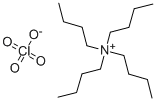
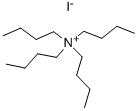
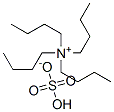
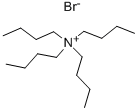
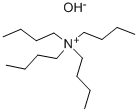

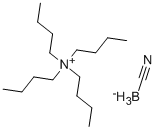
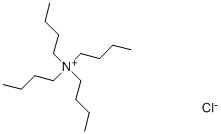
You may like
-
 429-41-4 98%View Details
429-41-4 98%View Details
429-41-4 -
 429-41-4 Tetrabutylammonium fluoride 98%View Details
429-41-4 Tetrabutylammonium fluoride 98%View Details
429-41-4 -
 Tetra butyl ammonium fluoride 1 M in THF (Septum Bottle ) CAS 429-41-4View Details
Tetra butyl ammonium fluoride 1 M in THF (Septum Bottle ) CAS 429-41-4View Details
429-41-4 -
 Tetrabutylammonium fluoride, 1M in THF CAS 429-41-4View Details
Tetrabutylammonium fluoride, 1M in THF CAS 429-41-4View Details
429-41-4 -
 Tetrabutylammonium fluoride, ~ 75% in water CAS 429-41-4View Details
Tetrabutylammonium fluoride, ~ 75% in water CAS 429-41-4View Details
429-41-4 -
 Tetrabutylammonium fluoride solution CAS 429-41-4View Details
Tetrabutylammonium fluoride solution CAS 429-41-4View Details
429-41-4 -
 Tetrabutylammonium fluoride solution CAS 429-41-4View Details
Tetrabutylammonium fluoride solution CAS 429-41-4View Details
429-41-4 -
 Tetrabutylammonium fluoride on silica gel CASView Details
Tetrabutylammonium fluoride on silica gel CASView Details
